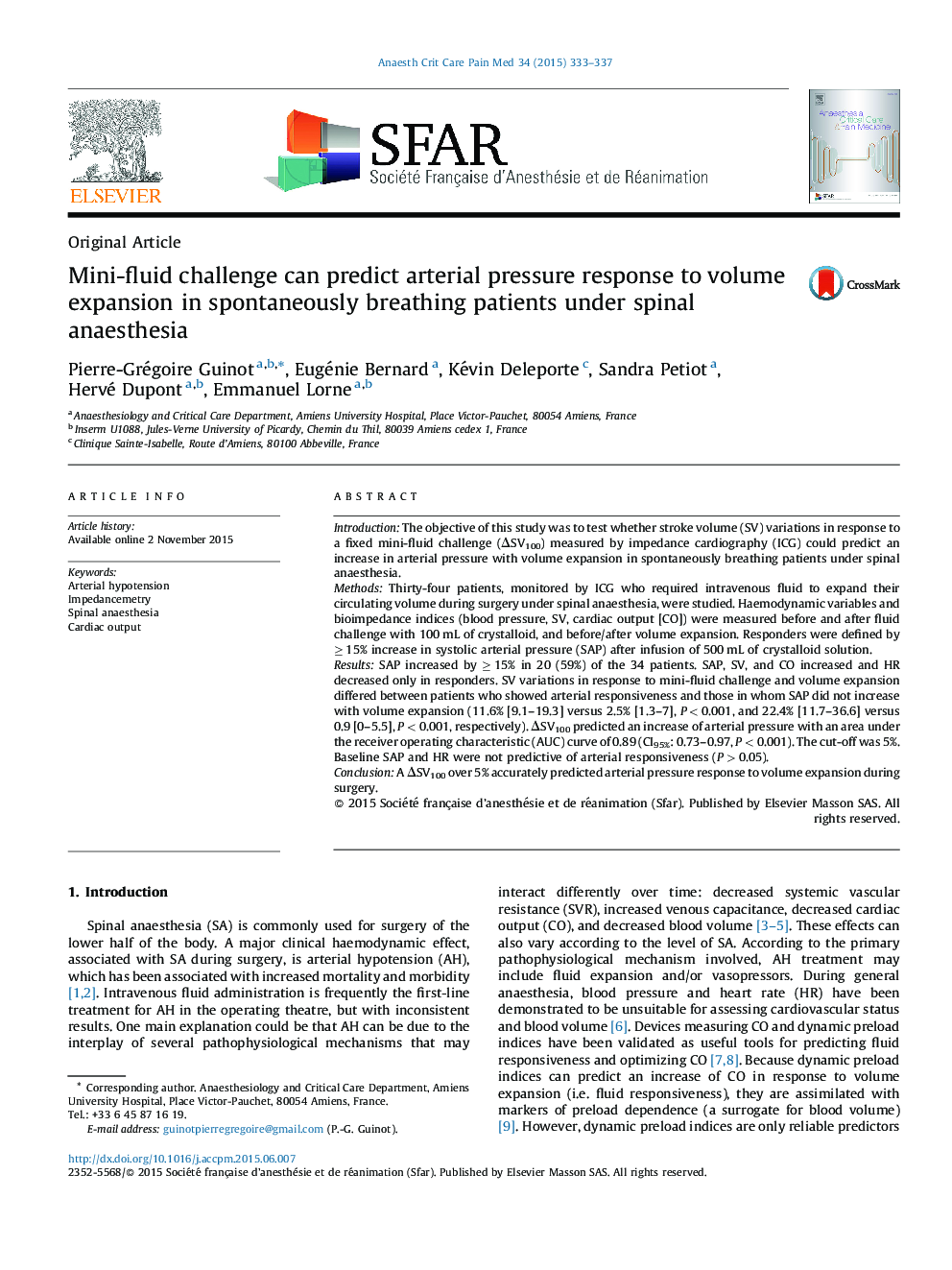| Article ID | Journal | Published Year | Pages | File Type |
|---|---|---|---|---|
| 2741943 | Anaesthesia Critical Care & Pain Medicine | 2015 | 5 Pages |
IntroductionThe objective of this study was to test whether stroke volume (SV) variations in response to a fixed mini-fluid challenge (ΔSV100) measured by impedance cardiography (ICG) could predict an increase in arterial pressure with volume expansion in spontaneously breathing patients under spinal anaesthesia.MethodsThirty-four patients, monitored by ICG who required intravenous fluid to expand their circulating volume during surgery under spinal anaesthesia, were studied. Haemodynamic variables and bioimpedance indices (blood pressure, SV, cardiac output [CO]) were measured before and after fluid challenge with 100 mL of crystalloid, and before/after volume expansion. Responders were defined by ≥ 15% increase in systolic arterial pressure (SAP) after infusion of 500 mL of crystalloid solution.ResultsSAP increased by ≥ 15% in 20 (59%) of the 34 patients. SAP, SV, and CO increased and HR decreased only in responders. SV variations in response to mini-fluid challenge and volume expansion differed between patients who showed arterial responsiveness and those in whom SAP did not increase with volume expansion (11.6% [9.1–19.3] versus 2.5% [1.3–7], P < 0.001, and 22.4% [11.7–36.6] versus 0.9 [0–5.5], P < 0.001, respectively). ΔSV100 predicted an increase of arterial pressure with an area under the receiver operating characteristic (AUC) curve of 0.89 (CI95%: 0.73–0.97, P < 0.001). The cut-off was 5%. Baseline SAP and HR were not predictive of arterial responsiveness (P > 0.05).ConclusionA ΔSV100 over 5% accurately predicted arterial pressure response to volume expansion during surgery.
